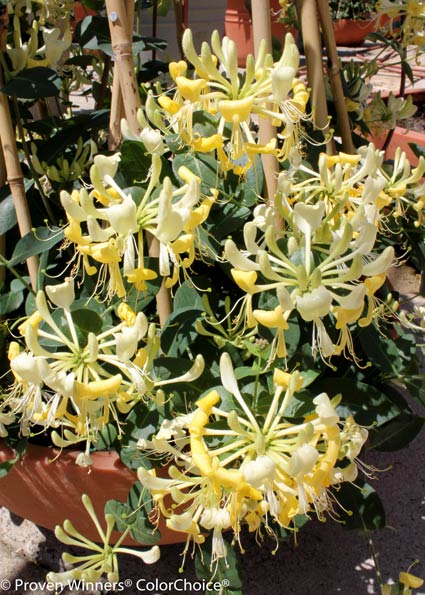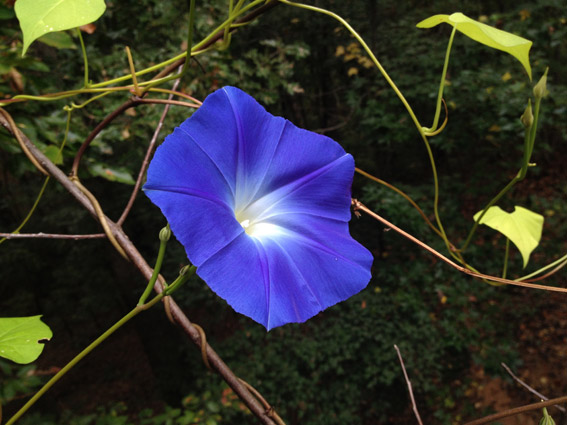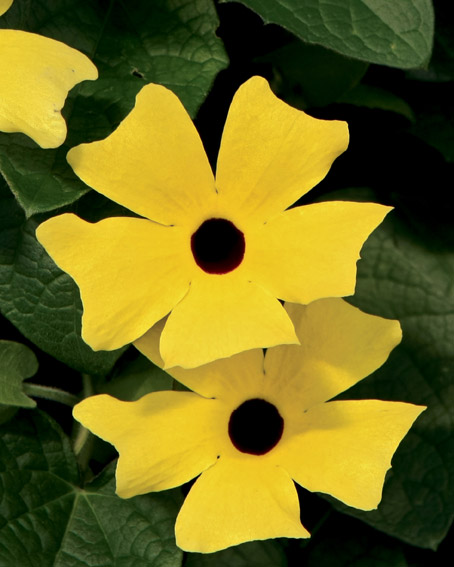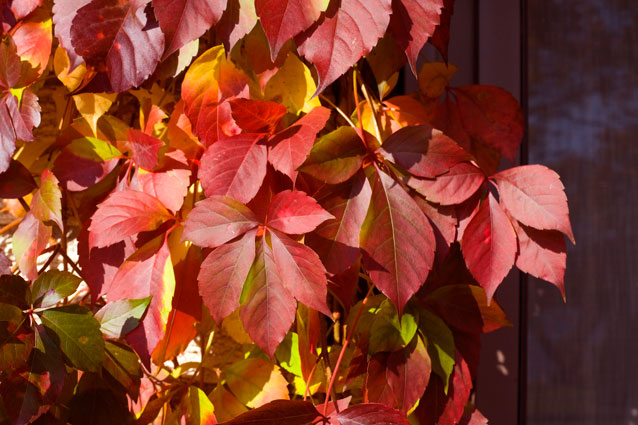How to Give Your Yard Four-Season Interest
Here are seven strategies for building a landscape looks good year-round by picking plants that change with the seasons or have interest in multiple seasons.

‘Scentsation’ honeysuckle © Proven Winners
If you garden long enough, it’s going to happen. When you’ve packed petunias into every garden bed, and bulbs into every border, you’re going to run out of room. But it’s hard to resist bringing home just one more flat of marigolds, and how can you say no to the neighbor with a surplus of seedlings?
When you run out of space, it’s time to opt for a vertical garden and choose plants that will reach for the sky. Growing plants that twist, twine, climb, and cling adds another dimension to your landscape. Most will attach readily to fences, trellises, arbors, bamboo stakes, and posts, or just wire and string. Here are some plants to try if you want to go vertical.
If you’ve never grown climbing plants before, start with some beautiful flowers. Clematis has been called the “queen of the climbers,” and these handsome perennials come in a range of colors. Most cultivars need a sunny spot with moist soil that drains easily; some, such as ‘Nellie Moser,’ take shade for part of the day. Clematis climb by wrapping their short leaf stems around whatever is nearby. Provide poles, twiggy branches, netting, or other supports that measure no more than about 1/2” in diameter.

Morning glory © Proven Winners
If you’re looking for easy-to-grow climbing plants, try morning glories (Ipomoea) like ‘Heavenly Blue’ or ‘Scarlet O’Hara.’ These annuals thrive in full sun, twining their tendrils onto whatever is handy. Plant the seeds in peat pots to transplant later or sow the seeds directly in your garden (soak them overnight for best germination) once all chance of frost has passed; morning glories don’t like having their roots disturbed.
Be aware that some climbers, like Wisteria, don’t know when to stop. Their thick, serpentine vines can overrun telephone poles, porches, trees, and just about anything else in its path. Planted in the right spot, however, and with correct pruning, Japanese wisteria (Wisteria floribunda) makes a spectacular addition to a vertical garden. In spring, the vines spill curtains of fragrant lilac, violet-blue, or white pea-shaped flowers over arbors, pergolas, and gazebos. After bloom time, their dense foliage is effective to shield an ugly view or shade a deck. Plant wisteria in full to part sun, and make sure that any structure they grow on is strong enough to hold their considerable weight. The vines can grow 10 feet or more each season, so keep those pruners handy.
Climbing roses are also lovely in a vertical garden. Despite their name, they don’t really climb, as true vines do. Train your roses onto a fence, trellis, or other structure by weaving, clipping, or tying their long canes in a horizontal direction. Some varieties bloom just once a year, but others flower throughout the growing season. Fragrant, pale pink ‘New Dawn’ is one of the most popular climbing roses. For a classic red rose, try ‘Don Juan’, a vigorous beauty that’s great for cutting.
Roses are more demanding than some of the true climbers, so be prepared to fertilize and water them regularly, and keep an eye out for pests or diseases.

© Proven Winners
Black-eyed Susan vines (Thunbergia alata) are also nearly carefree. They take full sun but appreciate afternoon shade in hot climates. This tender perennial is grown as an annual vine in northern zones. It has yellow to orange flowers with dark brown-maroon throats. It grows fast, latching onto walls, trellises, and mailboxes. Or try planting them in containers with strings or wires they can grab onto. The plants can reach 7 feet tall, so give them sturdy support.
If you’re more interested in foliage than flowers, Virginia creeper (Parthenocissus quinquefolia) grows readily in sun to shade, attaching themselves onto surfaces by aerial roots. This deciduous, perennial vine turns brilliant red in autumn and produces a berry crop that will invite birds to your garden. The plants grow fast, forming a living wall. Avoid planting this vigorous vine near buildings, where it may be hard to remove once it gets started.

Virginia creeper 'Red Wall’ © Proven Winners
Boston ivy (Parthenocissus tricuspidata), a relative of Virginia creeper, also grows vigorously, with attractive, emerald-green leaves that glow orange-red in fall. While not as aggressive as invasive English Ivy, be forewarned: the Boston ivy plants’ tendrils are difficult to remove from tree trunks, bricks, siding, and most surfaces. To be on the safe side, grow Boston ivy on trellises or other replaceable supports.
Once you’ve grown a climber or two, you’ll be ready to branch out with hyacinth bean vines (Lablab purpurea), exotic-looking bougainvilleas, passionflowers (Passiflora), non-invasive coral honeysuckle (Lonicera sempervirens), and more. In a vertical garden, the sky really is the limit.